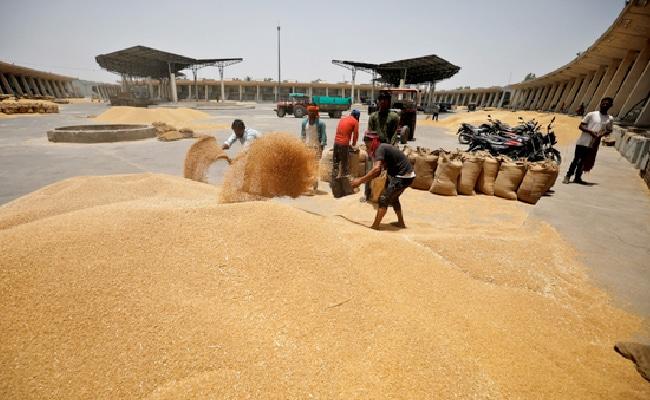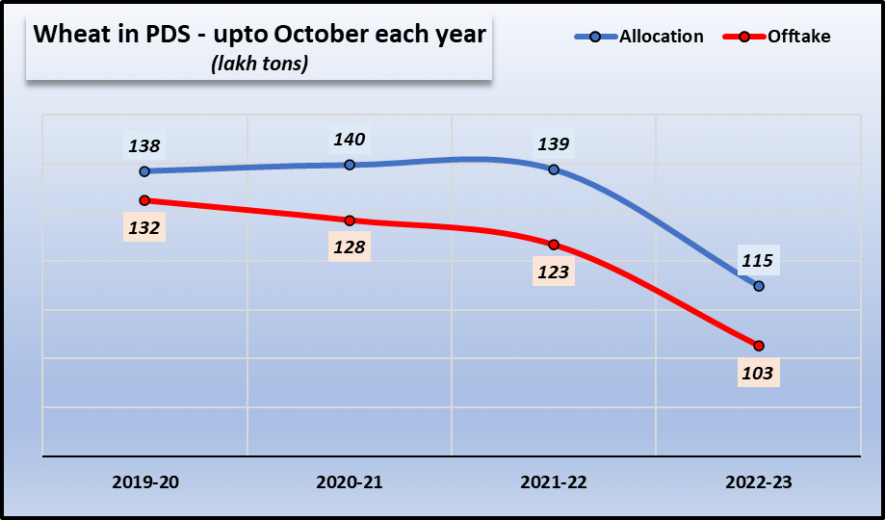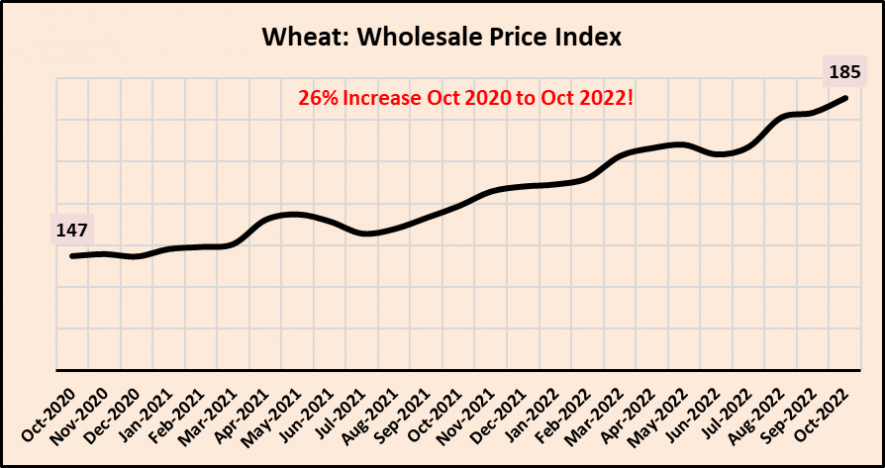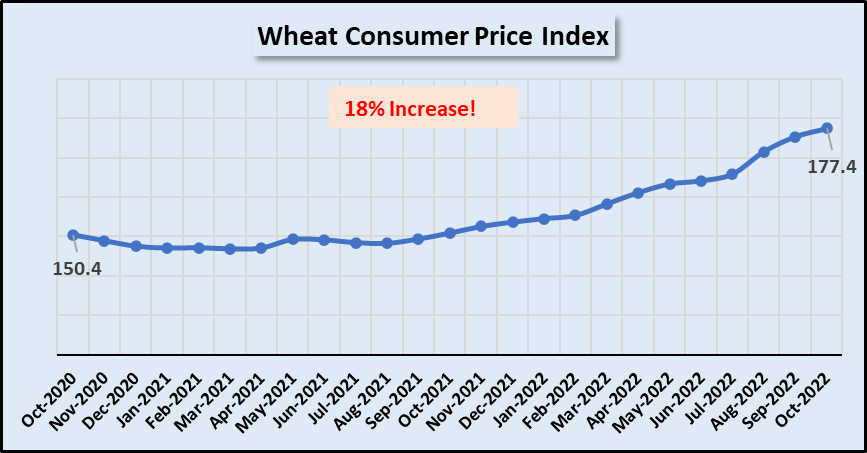Wheat Prices Zoom, Ration Offtake Falls

Image Courtesy: PTI
The latest available data shows that the allocation of wheat for distribution through the Public Distribution System (PDS)— the ration system as it is known—has fallen dramatically this year. This has naturally led to a drop in offtake, that is, the distribution to needy families.
Till October 2022, 115 lakh tonnes of wheat was allocated from the central pool of food grains, of which, 103 lakh tonnes were distributed, according to the Food Grain Bulletin issued every month by the department of food and public distribution. Compared to 2021, 139 lakh tonnes had been allocated till October and 123 lakh tonnes distributed. The chart below shows the falling trend.

Approximately, 80 crore people depend on the PDS for their food requirements and a decline in availability by around 16% over one year will cause immense harm to these families. The government has tried to replace some of the missing wheat with rice but the quality is reportedly not good, and in any case, people are not happy to undergo this coercive diet change.
Wheat Prices Rising
So, families are being forced to go to the open market to purchase wheat, or atta (flour), for their daily needs. Limited supply and increasing demand for wheat/atta in the open market has come as a boon for wholesale traders and middlemen. Despite a record harvest of wheat, its prices in the market have inexorably increased over the past two years, especially since the beginning of this year.
As the chart below shows, the wholesale price index (WPI) for wheat increased by a whopping 26% between October 2020 and October 2022. Data is from the Office of Economic Adviser, which collates and publishes WPI data for the government.

In the same period, the food articles WPI increased by about 8% and that for pulses and paddy increased by 6% each. Clearly, wheat prices have increased much beyond any general trend. This is directly because of the fall in the procurement of wheat, leading to a collapse of the wheat distribution through the PDS.
Consumer (or retail) prices of wheat/atta too have risen by about 18% in this period, as shown in the chart below, derived from the data warehouse maintained by the ministry of statistics and programme implementation.

The higher increase in wholesale prices compared to consumer prices means that in the coming months, consumer prices will continue to remain high as the wholesale wheat slowly trickles down to the consumers.
Such unprecedentedly high levels of one of India’s staple cereals have blown a big hole in the already besieged budgets of families. With prices of many other essential items—vegetables, milk, cooking oil and cooking gas—rising similarly, people have had to cut down on spending to make ends meet.
What About Food Grain Stocks?
It would seem obvious that the government could release wheat from its stocks to tame the rising prices. But this is where the most ominous dimension of the wheat crisis becomes clear. In the absence of adequate procurement, central wheat stocks sunk to a 15-year low of 210.46 lakh tonnes in November, as per the latest data from the department of food and public distribution.
The scale of this fall is shown by comparison to last year’s November wheat stock level of 419.8 lakh tonnes. That’s a decline of nearly 100%. Or, to put it more simply, stocks are half of what they were last year. The stocking norm for this time of the year is 205.2 lakh tonnes for wheat. The existing level is just 5 lakh tonne more than that.
In fact, it is not just wheat but rice too, which is low in stock. The current stock is 165.97 lakh tonnes compared to 229.22 lakh tonnes last November—that’s a dip of about 28%. Rice stocks have fallen as the government tried to compensate for the wheat shortage by distributing rice through PDS.
Gross Mismanagement of Food Grain Supply
As pointed out earlier this year in Newsclick, a series of wrong decisions compounded by the loss of the wheat crop due to the heat wave in March-April has led to this pass. Initially, the government was gung-ho about exporting wheat to take advantage of rising international prices due to the Ukraine War.
Prime Minister Narendra Modi advised traders to exploit the opportunity and get good profits. So, traders bought up large quantities of wheat from farmers who would have otherwise sold it to government procurement agencies. Then the government suddenly realised the danger of this diversion of wheat to export channels and scuppered the whole idea. Lakhs of tonnes of wheat was left with traders/exporters on the one hand and government warehouses were lying empty on the other hand.
Wheat stocks in private hands are being released slowly after prices have zoomed up. In fact, it would not be surprising if traders hold on to their stocks for longer in order to make a bigger killing with impending higher prices.
Meanwhile, the poorer sections of India—which means most of the country—have to pay the price by buying wheat/atta at exorbitant prices, reminiscent of the way things were in the 1960s.
Get the latest reports & analysis with people's perspective on Protests, movements & deep analytical videos, discussions of the current affairs in your Telegram app. Subscribe to NewsClick's Telegram channel & get Real-Time updates on stories, as they get published on our website.























